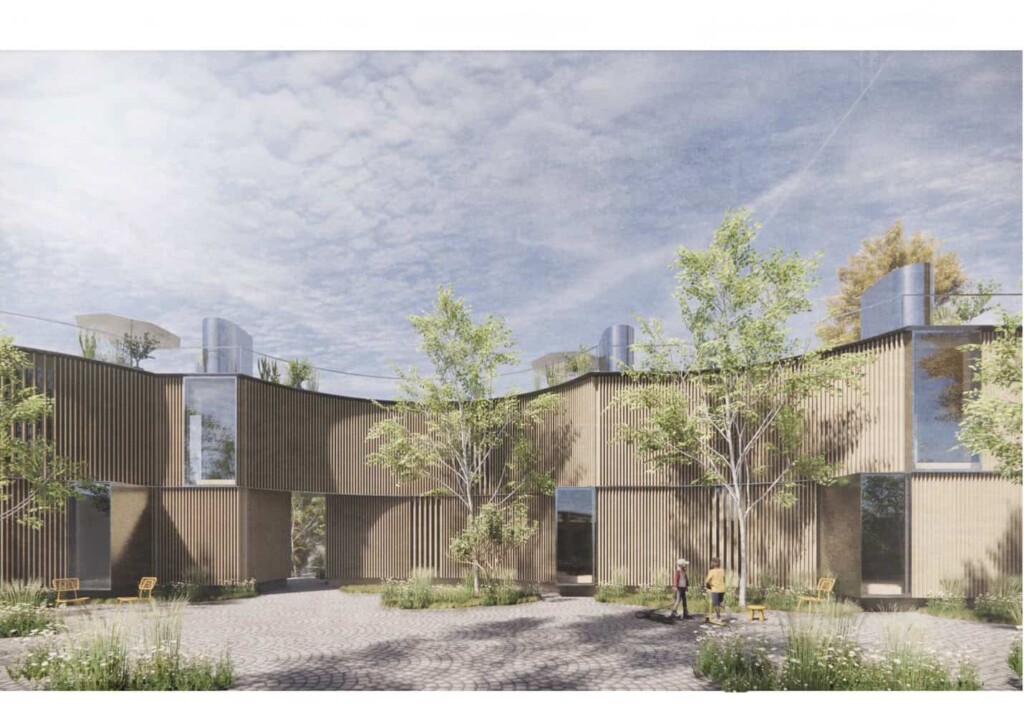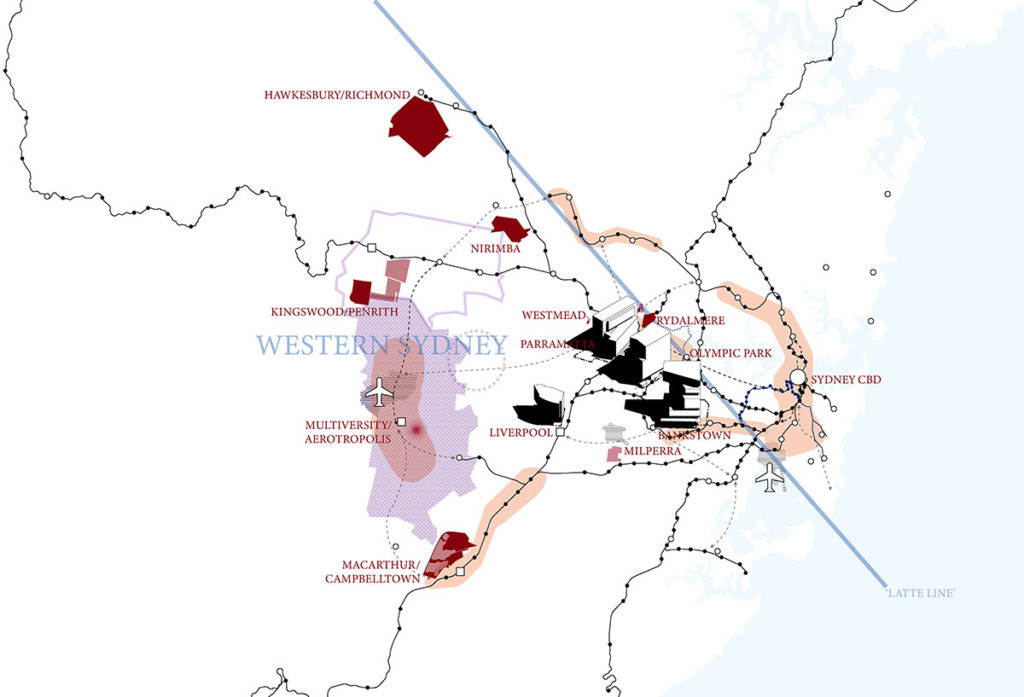Master in Real Estate
Master in Real Estate

Important Dates
Master in Real Estate
The Master in Real Estate is a 12-month degree that teaches individuals how to acquire or sharpen traditional skills and knowledge required of every real estate professional while simultaneously understanding how well-designed real estate can advance beneficial spatial, social, and environmental outcomes in cities and metropolitan areas worldwide. Through a multidisciplinary curriculum of in-residence required and elective courses and a concluding two-month off-campus practicum within a private or public real estate organization, students learn about finance, development, asset management, design, planning, law, social and environmental considerations, project and construction management, new technologies including AI, politics, public-private partnerships, entrepreneurship, negotiation, leadership, and other skills and subjects essential to the practice of present and future real estate.
The placement of the MRE degree within Harvard’s Graduate School of Design and its Department of Urban Planning and Design reflects the reality that real estate is a physical thing designed by many hands. MRE students significantly benefit from learning within one of the largest design schools in the world, with its 200 or so faculty members and over 1,000 graduate students and international presence. The Department of Urban Planning and Design is particularly well-suited to host the MRE degree program, with leading scholars and practitioners who teach courses about real estate and related subjects such as land use and environmental law, urban design and planning, housing, transportation, international development, healthy cities, and new towns, among many other subjects.
program overview
Harvard is more than the Graduate School of Design. There are 12 additional graduate and professional schools, along with the College, that together weave a rich tapestry of relevant courses and resources. Like all Harvard students, MRE students enjoy cross-registration privileges that enable them to take eligible courses at the Harvard Business School, the Kennedy School, the Law School, the T.H. Chan School of Public Health, the John A. Paulson School of Engineering and Applied Sciences, the College, and other Harvard graduate schools. Students may also cross-register in eligible classes at MIT.
The professional schools are supplemented by centers and institutes that sponsor conferences, guest speakers, research, and fellowships. The Joint Center for Housing Studies , co-administered by the GSD and the Kennedy School, publishes the heavily cited annual “State of the Nation’s Housing” report and enjoys long-standing relationships with some of the world’s largest housing developers, owners, and managers. Working from its specially designed and constructed HouseZero building, the GSD’s own Center for Green Buildings and Cities produces research on how existing buildings can dramatically reduce their energy footprints. Other Harvard centers and initiatives such as The Salata Institute for Climate and Sustainability , the Center for the Environment (part of the Salata Institute), the Taubman Center for State and Local Government , and the Bloomberg Harvard City Leadership Initiative sponsor many public programs with particular relevance to real estate study and practice.
The MRE program provides robust career assistance that starts with networking and continues with connecting. A dedicated MRE faculty member has the task of overseeing career help from faculty, alumni, and friends of the program. Most MRE faculty members are well-known practitioners who enjoy strong relationships with real estate organizations and individuals worldwide. Leading real estate practitioners regularly visit the program, give presentations, and meet privately with students over meals and other informal settings. A student-run Harvard GSD Real Estate Club co-sponsors with its Harvard Business and Law School counterparts an annual spring real estate conference. The Harvard Alumni Real Estate Board and the Harvard Real Estate Alumni Organization tap into Harvard’s vast alumni base of real estate professionals. The Practicum, while not designed to generate job offers, nevertheless does from time to time and furthermore connects students with other industry players.
MRE graduates are prepared to assume a wide variety of positions in private for-profit, private not-for-profit, and public entities engaged in real estate endeavors around the world. Typical employers include developers, asset managers, private equity firms, project and construction managers, community development corporations, family offices, affordable housing developers and managers, governments and quasi-public agencies, real estate advisory and consulting firms, and anchor institutions such as universities and medical institutions. Some MRE graduates choose to set off on their own entrepreneurial path. Others return to the organizations where they worked prior to matriculation, but with opportunities for promotion and new directions. After graduating, the range of employment categories is broad and has included: Acquisitions, Asset Management, Development, Planning and Design, Private Equity/Investment Banking, Real Estate Advisory, and Technology.
The MRE program is a designated STEM program. Accordingly, international students holding F-1 visas may be eligible for a 24-month Optional Practical Training (OPT) extension on top of their initial OPT of 12 months, for a total of 36 months following graduation. Each F-1 student must petition United States Citizenship and Immigration Services to approve the 24-month STEM extension, and Harvard does not represent or warrant that USCIS will grant any individual petition.
In the fall of 2020, Dean Sarah Whiting initiated a process to investigate the possibility of introducing a master’s degree in real estate at the Graduate School of Design. She asked Urban Planning and Design Professor Jerold Kayden, who subsequently became the degree’s Founding Director, to prepare, in consultation with faculty, students, alumni, and scholars and practitioners, a proposal that would describe the degree’s mission, curriculum, faculty, student backgrounds, and other relevant features. That degree proposal was submitted to and approved by the GSD’s voting faculty in the spring of 2021, advanced to the President and Provost of Harvard during the summer, and ultimately approved by the Harvard Corporation in December of 2021. Applications to the program commenced in the fall of 2022. The inaugural class matriculated in the fall of 2023 and graduated in the summer of 2024. The program is now hosting its third cohort of students. Between alumni and current students, the total number of MRE students is around 115.
student Projects
-
-

Infilling with Outbuildings
Nicky Rhodes (MArch I '26), Ian Erickson (MArch I '25), Nathan Lowrey (MRE '26), Vincent Jackow (MArch/MIT) -
![Monterrey’s Urban [River] Forest: Improving Microclimatic Conditions through Public-Private Partnership Vertical Development](https://www.gsd.harvard.edu/wp-content/uploads/2024/07/Monterrey-Urban-River-Forest_PlimptonPoorvuPrize2024_Submission-1_Page_01_2-1024x663.jpg)
Monterrey’s Urban [River] Forest: Improving Microclimatic Conditions through Public-Private Partnership Vertical Development
Miguel Lantigua Inoa (MArch II/MLA AP ’24), Jaime Espinoza (MRE ’25), Chris James (MRE ’25) -

SILVERLINE: A New Model for Data Centers in the Age of AI: Verticalities at the Edge of the Cloud
Ben Parker, Christopher Oh, Ziyang Dong, Jasmine Ibrahim, Thomas Oslund, Catherine Murray -

The Gansevoort: Design for Longevity
Xinxin Cheryl Lin (MArch II ’24), Vivian Cheng (MAUD ’23), Pinyang Paul Chen (MRE ’24/MLAUD ’23), Ben van Berkel, Dana Behrman
Master of Architecture in Urban Design / Master of Landscape Architecture in Urban Design
Master of Architecture in Urban Design / Master of Landscape Architecture in Urban Design
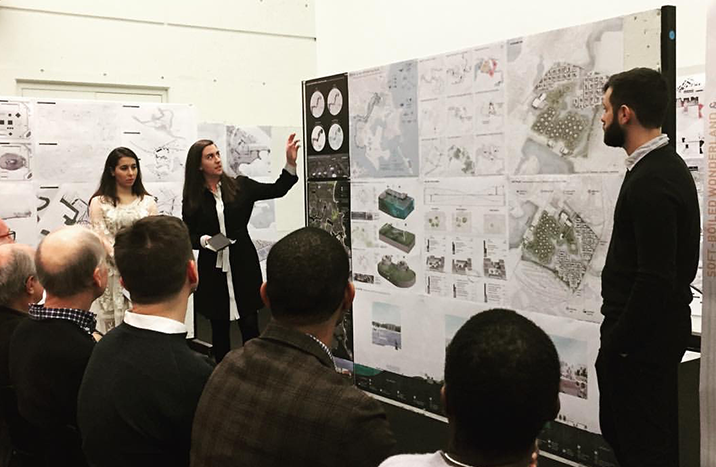
Important Dates
Master of Architecture in Urban Design / Master of Landscape Architecture in Urban Design
On this page
As a post-professional studio based program, the Master of Architecture in Urban Design (MAUD) and the Master of Landscape Architecture in Urban Design (MLAUD) combines intense design instruction, extensive applied research, and knowledge of urban history and theory.
Taking advantage of the remarkable international makeup of the faculty and student body, the MAUD/MLAUD program establishes a common intellectual ground among architects who have a strong interest in engaging the practice and theory of contemporary urbanism.
Conceived as a two-year (four-semester) program, the MAUD/MLAUD core curriculum includes the Elements of Urban Design Studio and the Urban Design Contexts and Operations seminar in the fall, followed by an Urban Planning and Design Studio and the Cities by Design seminar in the spring. An otherwise flexible academic path in each of the four semesters allows students to engage in advanced studios and elective courses across all three GSD departments as well as other schools at Harvard and MIT. The curricular structure also encourages advanced research and the possibility to develop an individual elective thesis.
program overview
The MAUD/MLAUD program introduces post-professional students, already trained in architecture or landscape architecture, to the critical concepts, strategies, and technical skills associated with contemporary Urban Design research and practice. Through studio and coursework, students are challenged to imagine new formal and organizational strategies for the delivery of housing, infrastructure, and a democratic public realm by taking on issues of inequality, climate change, the environment, and public health. Through history and theory lecture courses, seminars, and research projects, students engage a range of critical frameworks and conceptual models for understanding the complex socio-spatial dynamics of urban design practices and the technological, institutional, and political contexts in which they operate over time and across cultures and geographies.
Since the emergence of Urban Design as a modern practice in the 19th century and its establishment as a distinct field of study at Harvard in 1960, the scope and ambition of Urban Design has significantly expanded. As cities grow and diversify, so does the landscape of urban and peri-urban conditions. Globally, the expansion and transformation of metropolitan regions have introduced new scales and urban archetypes, producing an even wider range of local characteristics, cultural identities, and community needs requiring attention and resolution. This increase in formal, social, economic, and environmental complexity has further complicated the field of urban design, shifting the geography and focus from rigid specialization in primarily western contexts to trans-disciplinary and internationally varied processes that embrace complexity and anticipate change.
During their two years of study, students develop the necessary literacies to critically engage with, interrogate the character, and transform the form of complex built environments. In addition to diverse course offerings, numerous research opportunities with faculty further enrich a dynamic and exciting learning environment for exploring and advancing meaningful responses to the challenges of our time.
Four terms of full-time study in residence are required for award of the degree. Under special circumstances, students may receive permission to reduce their course loads and extend their studies over a longer period. Concurrent and joint degree candidates must consult the rules governing concurrent and joint degrees for information on residency requirements.
Please note that the MAUD/MLAUD program is designated as a STEM program. Accordingly, international students holding F-1 visas may be eligible for a 24-month Optional Practical Training (OPT) extension on top of their initial OPT of 12 months, for a total of 36 months, following graduation. Each F-1 student must petition United States Citizenship and Immigration Services to approve the 24-month STEM extension, and Harvard does not represent or warrant that USCIS will grant any individual petition.
STUDENT pROJECTS
-

Bracing Peter Bracy
Hana Cohn (MLA I '24), Youngju Kim (MAUD ’23), Arami Matevosyan (MDes ’22), Naksha Satish (MAUD ’22), Gina Ford, Rhiannon Sinclair -

Building a Scalable Business in Data Centers
Sarah Fayad (MLAUD ’20), Ian Grohsgal (MArch I ’21), Dixi Wu (MDes/MArch I ’22), Frank Apeseche, Holly Samuelson -
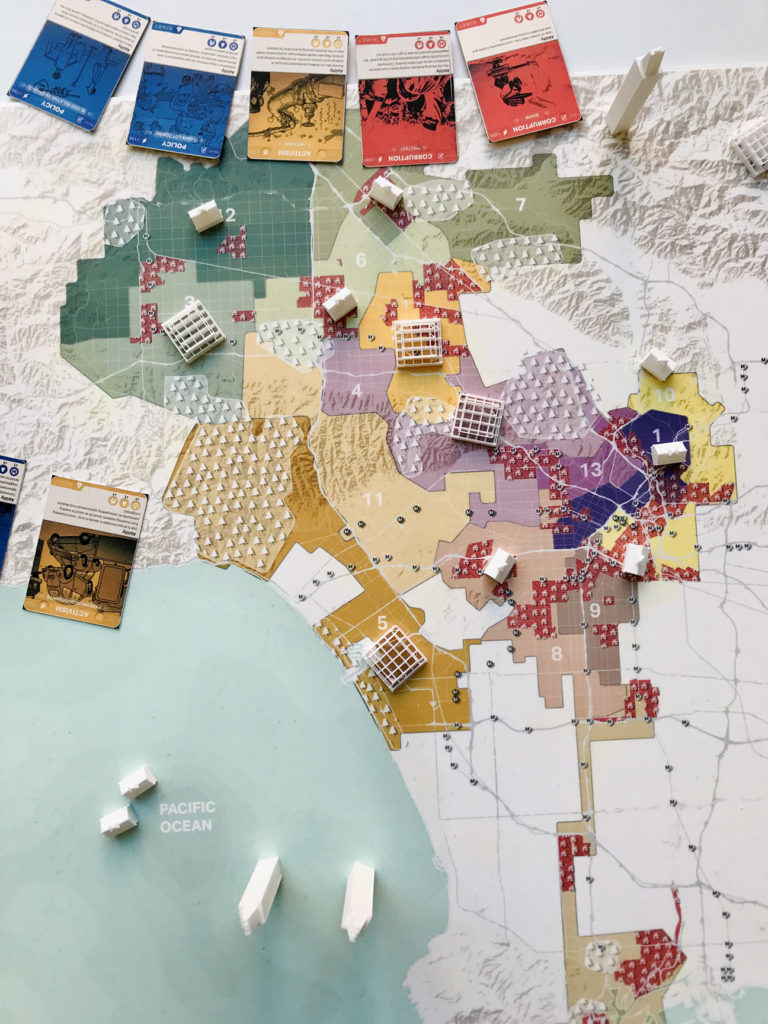
Equity in Housing Distribution
Sarah Fayad (MLAUD ’20), Daniel D’Oca -
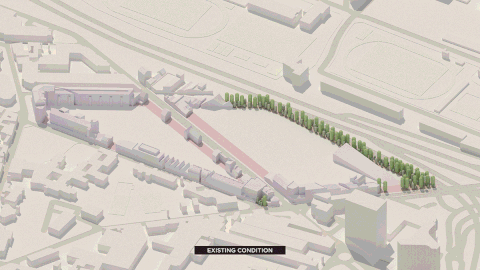
Le Circuit Périphérique
Jorge Ituarte-Arreola (MAUD '21), Alex Kozak (MDes '21), Melissa Ponce (MDes '21), Bing Wang -

Re-Thinking LIC
Aeshna Prasad (MAUD '21), Isaac Tejeira (MAUD '22), Michael Samuelian -
-

Oasi Plaza
Zehui Gong (MAUD ’20), Jing Hai (MAUD ’20), Daisha Martin (MUP ’20), Sidharth Somana (MDes ’21), Richard Peiser -

Terra Fluxus
Shizheng Geng (MAUD '21), Youngju Kim (MAUD '21), Julia Watson -

Hea-R-Us
Tatum Lau (MAUD '19), Xin Wen (MAUD '20), Cindy Xiao (MAUD '20), Jose Luis Vallejo -
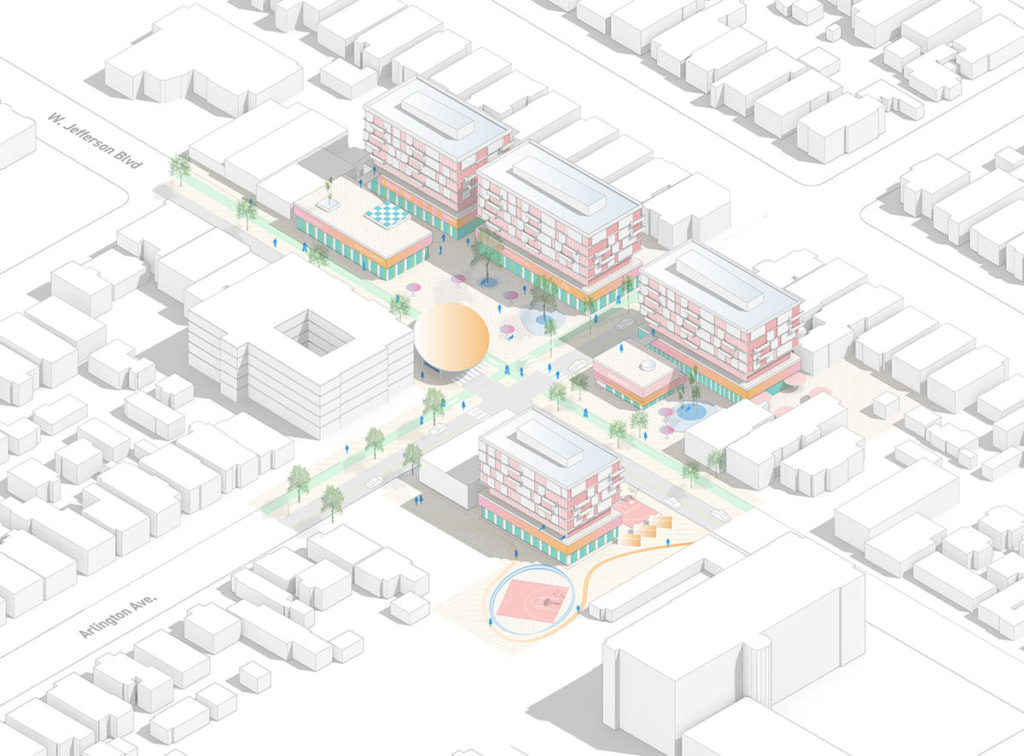
Change the Street, Transform the City
Yuzhou Andrew Peng (MAUD '19), Solomon Green-Eames (MUP '19), Andres Sevtsuk
Master in Urban Planning and Juris Doctor
Master in Urban Planning and Juris Doctor
Harvard Law School (HLS) and the Harvard University Graduate School of Design (GSD) offer a joint degree program in law and urban planning. The HLS/GSD joint degree program supports and encourages students seeking an interdisciplinary education in urban planning and law, and prepares them for leadership positions at the intersection of these fields. The joint program permits students to pursue a Juris Doctor (JD) degree at HLS and a Master in Urban Planning (MUP) degree at the GSD and to complete both degrees in four years, rather than the five years that would be required if the degrees were pursued independently. Students in the joint program must complete all of the basic requirements for both the MUP and JD degrees, as further described below.
A committee made up of HLS Professor Molly Brady and GSD Professor Jerold Kayden (“Faculty Committee”) oversees the joint degree program. The Faculty Committee is responsible for making decisions regarding the structure and requirements of the program and for working with the students enrolled in the program.
Overview
Prospective JD/MUP students must apply, and be separately admitted, to both HLS and the GSD, each of which will independently review and admit applicants. Questions relating to the admissions process at each school should be addressed directly to JD Admissions at HLS and to the Admissions Office at the GSD.
Prospective JD/MUP students may apply to HLS and/or the GSD, concurrently in advance of admission to either school, or during the first year at either school. Students interested in applying to either school for matriculation the following September should note the HLS deadline is early February while the GSD deadline is in early January. All HLS applicants are required to submit a GRE or LSAT score, in accordance with application guidelines. All GSD applicants are required to submit a GRE score. Once admitted, students should follow the notification procedures at each school regarding acceptance of admission and plans to matriculate.
Students admitted to both schools should email Kristi Jobson, Assistant Dean for Admissions and Chief Admissions Officer at HLS, and Sean Conlon, GSD Registrar, if they intend to enroll in the joint degree program.
The joint degree program is currently limited to six entering students each year. If more than six eligible students seek to start the program in any given year, then the Faculty Committee will rank order the list of students, permitting enrollment of the top six.
Students in the joint degree program have four academic years to complete both degrees and are expected to spend five semesters and two winter terms in residence at HLS and three terms in residence at the GSD, for a total of eight fall or spring semesters/terms and two HLS winter terms.
In the first two years of the joint degree program, students are required to enroll for one full year of study at HLS and for one full year of study at the GSD; either can come first. In the third and fourth years of the program, joint degree students will enroll in, and take courses at, both schools. Students must take the majority (at least 12 units of the required 40) of their coursework at the GSD during one of those terms. See below for more information about the coursework at each school.
Students in the joint degree program will have a primary faculty advisor at both HLS and the GSD. Faculty advisors will supervise a student’s academic work and assist in determining the most appropriate sequencing for each student’s course of study, keeping in mind the requirements for both degrees.
For more information, visit the Harvard Law School website .
Master in Urban Planning and Master in Public Administration
Master in Urban Planning and Master in Public Administration
Harvard Kennedy School (HKS) and the Harvard University Graduate School of Design (GSD) offer a joint degree program in public administration and urban planning.
The joint degree program permits students to pursue a Master in Public Administration (MPA) or Master in Public Administration in International Development (MPA/ID) degree at HKS and a Master in Urban Planning (MUP) degree at the GSD. Both degrees are completed in three years, rather than the four years that would be required if the two degrees were pursued independently. Students in a joint degree program must complete all of the requirements of both the MPA (or MPA/ID) and MUP degrees.
A committee made up of GSD Professor Ann Forsyth and GSD Professor Jerold S. Kayden (“Faculty Committee”) oversees the degree program. The Faculty Committee is responsible for making decisions regarding the structure and requirements of the program and for working with students.
overview
Prospective MUP/MPA or MPA/ID students must apply, and be separately admitted, to the GSD and HKS, each of which will independently review and admit applicants.
Prospective MUP/MPA or MPA/ID students may choose to apply to the GSD and HKS at the same time in advance of admission to both schools, or to the GSD or HKS during their first year at the school to which they have already matriculated. Students interested in applying to either school should be careful to observe the application deadlines for each school.
Students admitted to both schools at the same time must inform both schools of their enrollment decision no later than the deadline set by each school, and they must indicate their intention to pursue the joint degree program and at which school they plan to begin their studies. Students admitted to the GSD or HKS during their first year at the other school must inform both schools no later than the deadline by which they must accept admission that they intend to pursue the joint degree program.
Students in the joint degree programs have three academic years to complete both degrees and are required to spend three terms in residence at the GSD and three terms in residence at HKS, for a total of six terms. During the third year of the joint degree students are in-residence in both schools simultaneously. In three years, students must satisfy all curricular course requirements for both the MUP and MPA or MPA/ID programs.
In the first two years of the joint degree programs, students are required to enroll for one full year of study at the GSD and for one full year of study at HKS. Either can come first. In the third year of the program, joint degree students will be considered simultaneously enrolled in both schools.
For more information, please refer to the Joint MUP/MPA Degree Plan (PDF).
Master in Urban Planning and Master in Public Policy
Master in Urban Planning and Master in Public Policy
Harvard Kennedy School (HKS) and the Harvard University Graduate School of Design (GSD) offer a joint degree program in public policy and urban planning.
The joint degree program permits students to pursue a Master in Public Policy (MPP) degree at HKS and a Master in Urban Planning (MUP) degree at the GSD and to complete both degrees in three years, rather than the four years that would be required if the two degrees were pursued independently. Students in the joint degree program must complete all of the basic requirements for both the MPP and MUP degrees.
A committee made up of GSD Professor Ann Forsyth and GSD Professor Jerold S. Kayden (“Faculty Committee”) oversees the degree program. The Faculty Committee is responsible for making decisions regarding the structure and requirements of the program and for working with students.
overview
Prospective MUP/MPP students must apply, and be separately admitted, to the GSD and HKS, each of which will independently review and admit applicants.
Prospective MUP/MPP students may choose to apply to the GSD and HKS at the same time in advance of admission to both schools, or to the GSD or HKS during their first year at the school to which they have already matriculated. Students interested in applying to either school should be careful to observe the application deadlines for each school.
Students admitted to both schools at the same time must inform both schools of their enrollment decision no later than the deadline set by each school, and they must indicate their intention to pursue the joint degree program and at which school they plan to begin their studies. Students admitted to the GSD or HKS during their first year at the other school must inform both schools no later than the deadline by which they must accept admission that they intend to pursue the joint degree program.
Students in the joint degree programs have three academic years to complete both degrees and are required to spend three terms in residence at the GSD and three terms in residence at HKS, for a total of six terms. During the third year of the joint degree students are in-residence in both schools simultaneously. In three years, students must satisfy all curricular course requirements for both the MUP and MPP programs.
In the first two years of the joint degree programs, students are required to enroll for one full year of study at the GSD and for one full year of study at HKS. Either can come first. In the third year of the program, joint degree students will be considered simultaneously enrolled in both schools.
For more information, please refer to the Joint MUP/MPP Degree Plan (PDF).
Doctor of Philosophy
Doctor of Philosophy

Important Dates
Doctor of Philosophy
Students may study for a PhD degree in Architecture, Landscape Architecture, and Urban Planning. An additional track in Architectural Technology is also available. This degree is administered jointly by the Harvard Graduate School of Design and the Harvard Kenneth C. Griffin Graduate School of Arts and Sciences. Therefore, students benefit from a dual affiliation with both schools.
The program is mainly geared towards individuals who wish to enter academic teaching and research careers. Students are afforded a high degree of flexibility in their studies, however areas of work are broadly organized into the following areas: the Theory and History of Architecture, Architectural Technology, the Theory and History of Landscape Architecture, and the Evolution of Cities and Regions.
Theory and History of Architecture:
Students interested in this area typically study buildings, architectural texts, technologies, and their political, social, and cultural contexts through the early modern, modern, and contemporary eras.
Architectural Technology:
Doctoral research in architectural technology at the GSD aims to advance current knowledge in green building, for example, and will typically involve issues related to engineering, computation, and digital simulations.
Theory and History of Landscape Architecture:
Students whose research focuses on the theory and history of landscape architecture typically investigate the ways in which the natural environment has been thought of, represented, and transformed, from the early modern to the contemporary period.
Evolution of Cities and Regions:
Students may be interested in the subject of cities from a formal standpoint and/or develop an additional emphasis on various social, economic, technological, infrastructural, and ecological dimensions of urban life.
program director
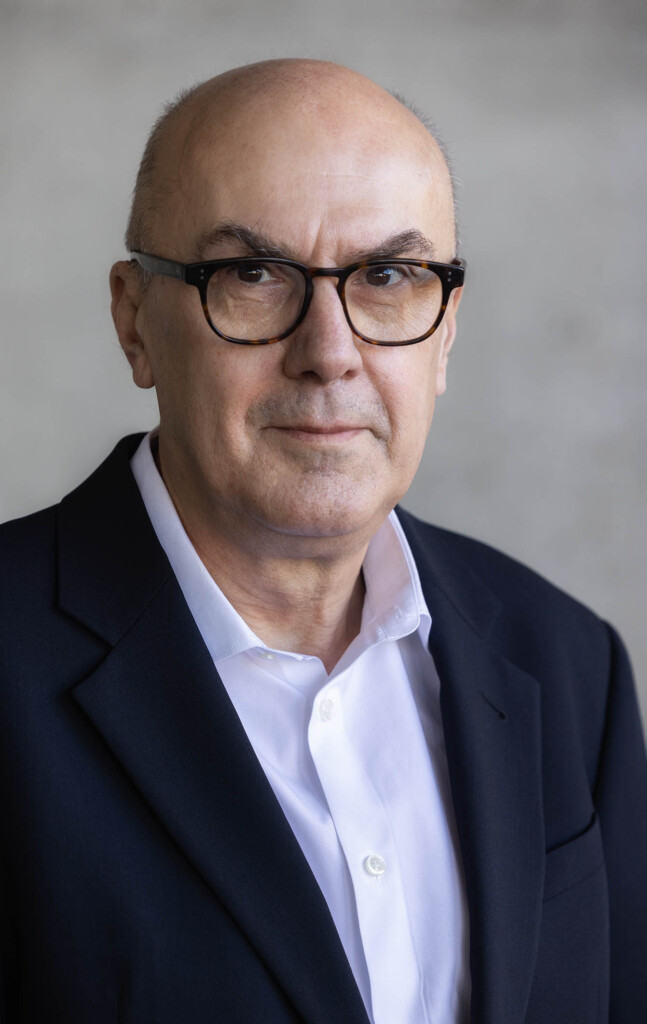
Antoine Picon
Director of Doctoral Programs, Director of the PhD Program, G. Ware Travelstead Professor of the History of Architecture and Technology
program administrator
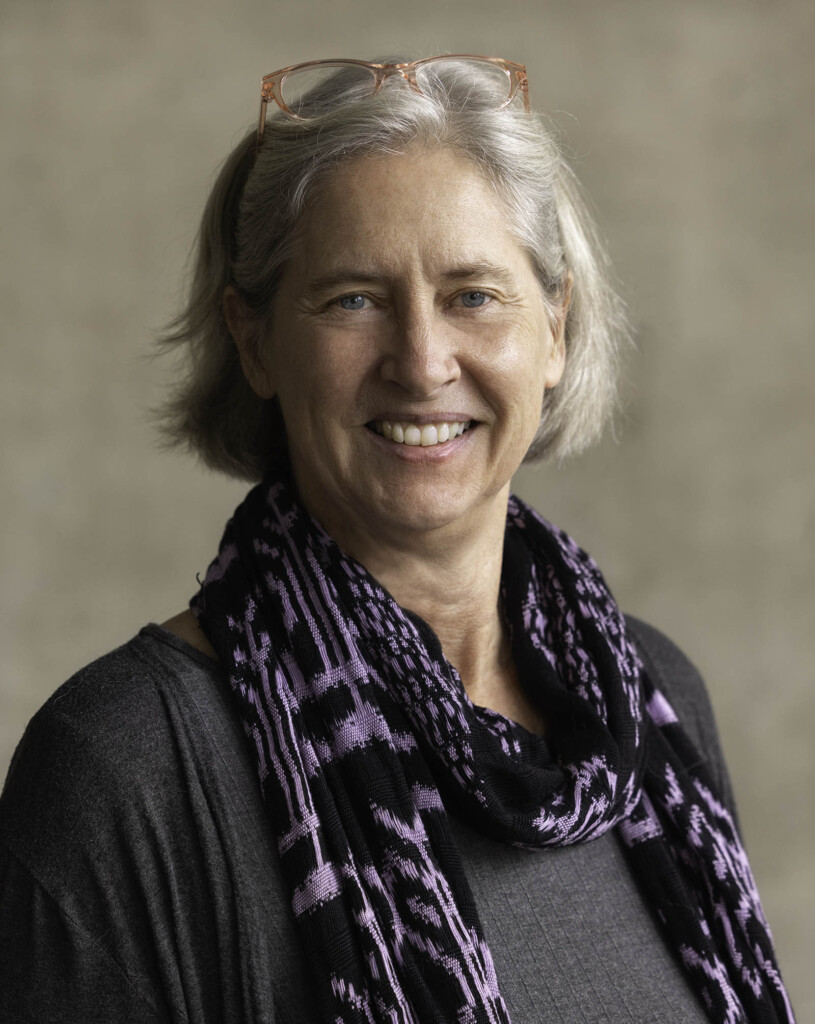
Margaret Moore de Chicojay
Program AdministratorAdvanced Studies Programs
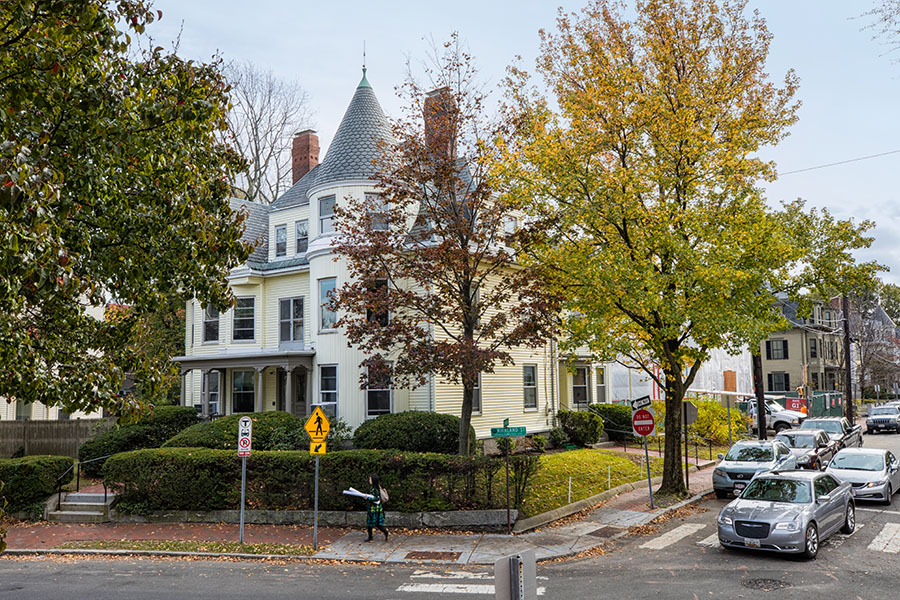
Advanced Studies Program Office
Room 1-A/1-B
40 Kirkland Street
Cambridge, MA 02138
Master in Urban Planning
Master in Urban Planning

Important Dates
Master in Urban Planning
Accredited by the Planning Accreditation Board and open to students with an undergraduate degree, the two-year professional Master in Urban Planning (MUP) degree program engages with critical issues facing cities and regions in coming decades
program overview
Drawing on the strengths of the department, school, and university, GSD planning students learn how to understand, analyze, and influence the variety of forces—social, economic, cultural, legal, political, ecological, and aesthetic, among others—shaping the built environment. Four key areas of concern animate the learning environment: how planning can manage change in complex environments; dealing with multiple scales and systems; engaging ethically with problems now and in the future; and planning as an active practice where implementation matters.
A two-year enrollment of roughly 80 students and a core, interdisciplinary faculty of scholars and practitioners generate an intimate, engaged educational atmosphere in which students acquire the knowledge and skills necessary for leadership positions in their future professional careers.
The planning program administers joint degree programs with the Law School, the Harvard Kennedy School, and the Harvard Chan School of Public Health. Planning students often cross-register in courses offered by the Faculty of Arts and Sciences, the Kennedy School, and the schools of business, law, education, engineering, and public health. Students in the urban planning program also take courses offered by the GSD’s other degree programs in architecture, landscape architecture, urban design, design studies, and design engineering. They can cross-register in courses offered by the neighboring Massachusetts Institute of Technology.
The Loeb Fellowship program is a terrific resource for students, bringing mid-career professionals, many of them in planning and related areas, to the GSD for a year. Each year, the Lincoln Institute for Land Policy , collaborating with the American Planning Association and Harvard, convenes planning directors from the 30 largest cities in the U.S. to discuss emerging issues. Urban planning students interact with the directors informally and in a classroom setting.
Studio, thesis, and class projects link students to communities in the Boston area and beyond. The school’s Community Service Fellowship Program (CSFP) provides both summer internships in the U.S. and small overseas travel grants. Various Harvard units provide summer and winter opportunities relevant to urban planning students, including the Rappaport Public Policy Summer Fellowship , Edward M. Gramlich Fellowship in Community and Economic Development , and Presidential Public Service Fellowships . There is also funding for research travel (e.g., thesis data collection) or independent internships in Latin America, Africa, South Asia, and elsewhere.
Four terms of full-time study in residence are normally required for award of the degree. Under special circumstances, students may receive permission to reduce their course loads and extend their studies over a longer period of time. Concurrent and joint degree candidates must consult the rules governing concurrent and joint degrees for information on residency requirements.
Please note that the MUP program is designated as a STEM program. Accordingly, international students holding F-1 visas may be eligible for a 24-month Optional Practical Training (OPT) extension on top of their initial OPT of 12 months, for a total of 36 months, following graduation. Each F-1 student must petition United States Citizenship and Immigration Services to approve the 24-month STEM extension, and Harvard does not represent or warrant that USCIS will grant any individual petition.
The Master of Urban Planning (MUP) program, combined with practical experience and the AICP exam, leads to professional certification from the American Institute of Certified Planners. Harvard has not determined whether the program meets the educational requirements for professional licensure in any state other than Massachusetts.
Organizations both big and small worldwide are interested in GSD students and alumni. Urban planning training brings a wealth of knowledge and transferable skills outside of traditional practice to many industries, including but not limited to consulting, planning, government, higher education, non-profits, and other public and private institutions in the United States and internationally.
StudenT projects
-

After Snow: The Case for an Alpine Public
Cory Robinson Page (MLA I/MUP ’25), Kira Clingen -

VEILED VISIBILITY: SPATIAL MEMORY AND QUEER IDENTITY IN SHINJUKU NI-CHōME
Mike Kaneshiro Chou (MUP/MPH ’25), Dana McKinney White, Peter Rowe -

Chemical Occupations: Anti-Colonial Reactions in the Desert
Issam Azzam, Rosalea Monacella -

Mumbai INformal
Kiara Nahomy Wong Siu (MAUD '25), Teresa Ka Weng Lai (MAUD '25), Henry Black (MUP '26), R. Kofi Boakye Bempong (MUP/MPA '26) -
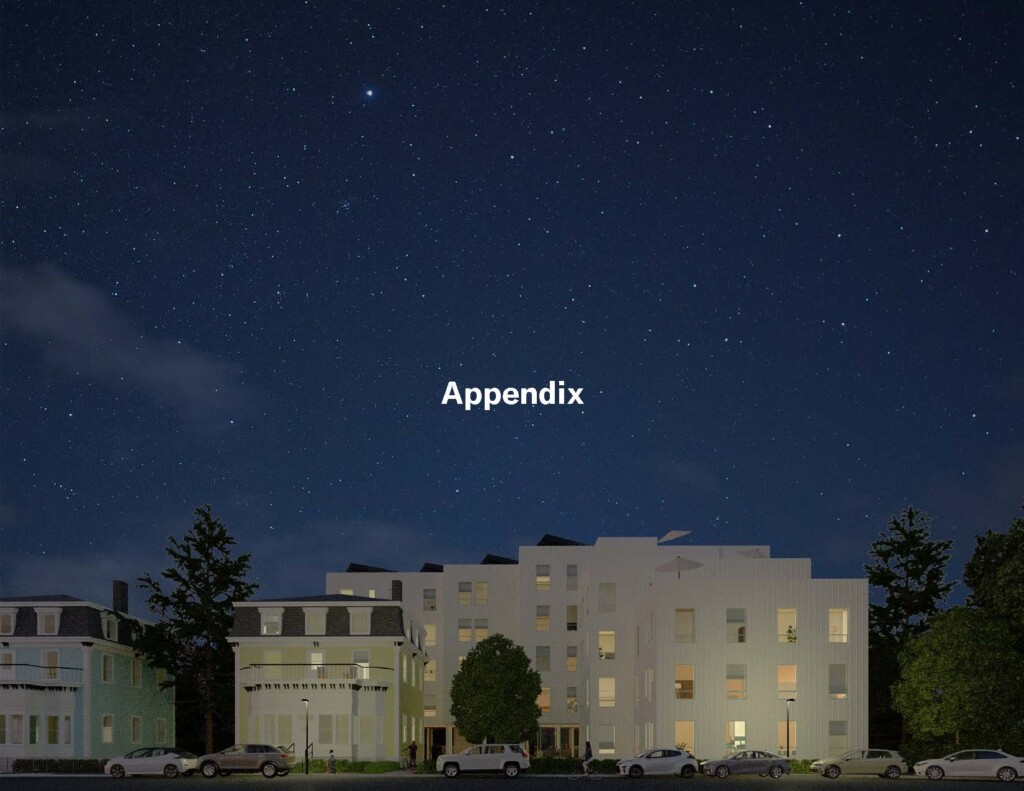
Walnut Park Place: Affordable Ownership Opportunities for the Egleston Square Community
Aaron Smithson (MArch/MUP '25), Cat Chen (MArch '25), Maggie Weese (MUP/MPH '24) -
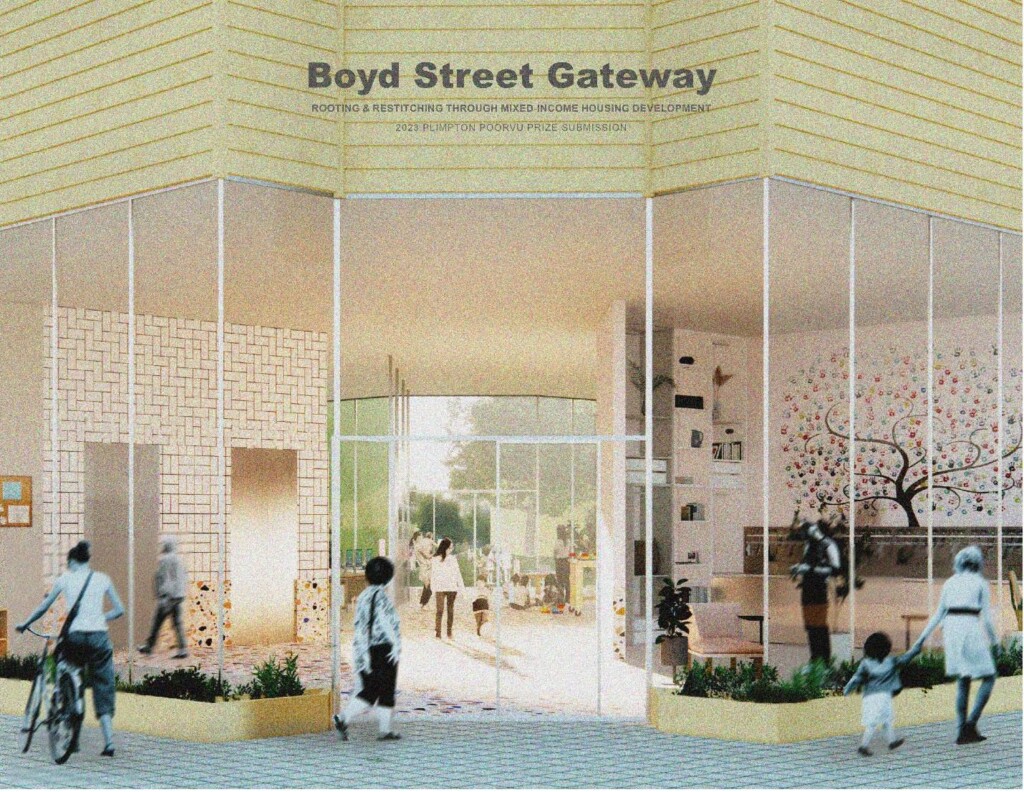
Boyd Street Gateway
Maddie Farrer (MArch I '25), Madeleine Levin (MUP '23), Arielle Rawlings (MUP '23), Edward Marchant -

Truly, Oregon! Empower Lloyd Center, Portland, OR
Heejin Park (MAUD ’23), Terry Kim (MUP ’23), Aelin Shaoyu Li (MDes ’24), Claire Tham (MUP ’23), Li Zhou (MDes ’23), Richard Peiser -
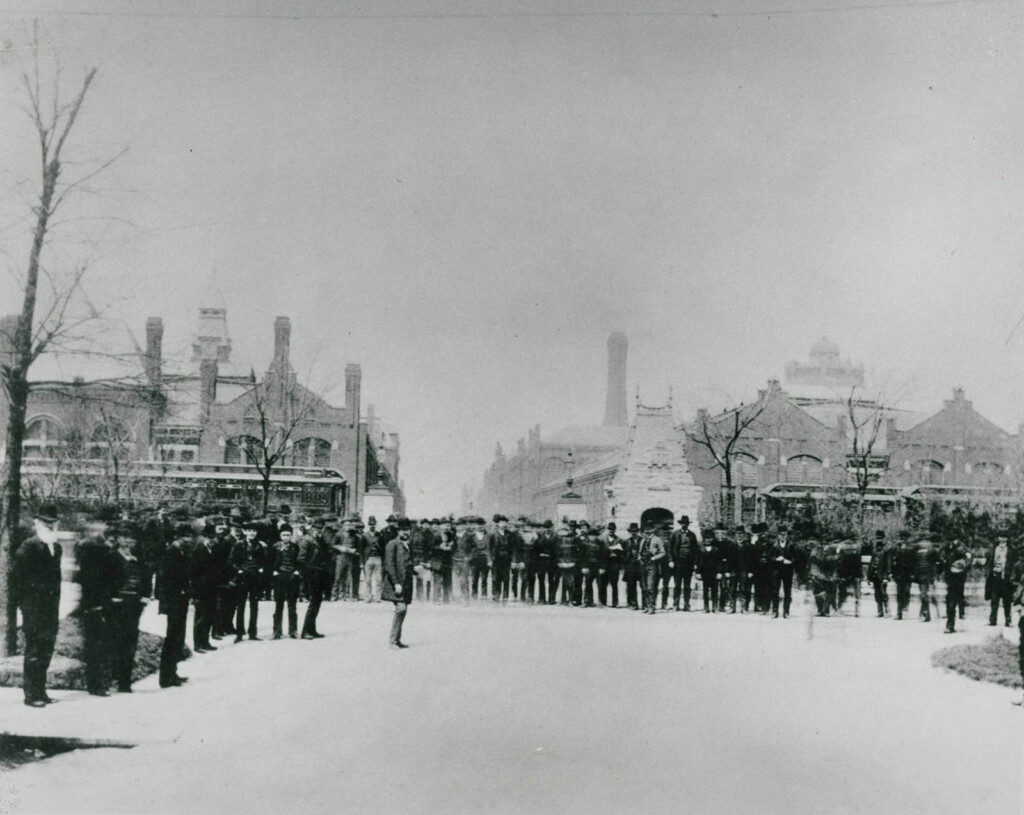
Our History is our Resource: Historic Narrative as Urban Planning Strategy in Chicago’s Pullman Neighborhood
Michael Zajakowski Uhll (MUP '23), Rachel Meltzer -
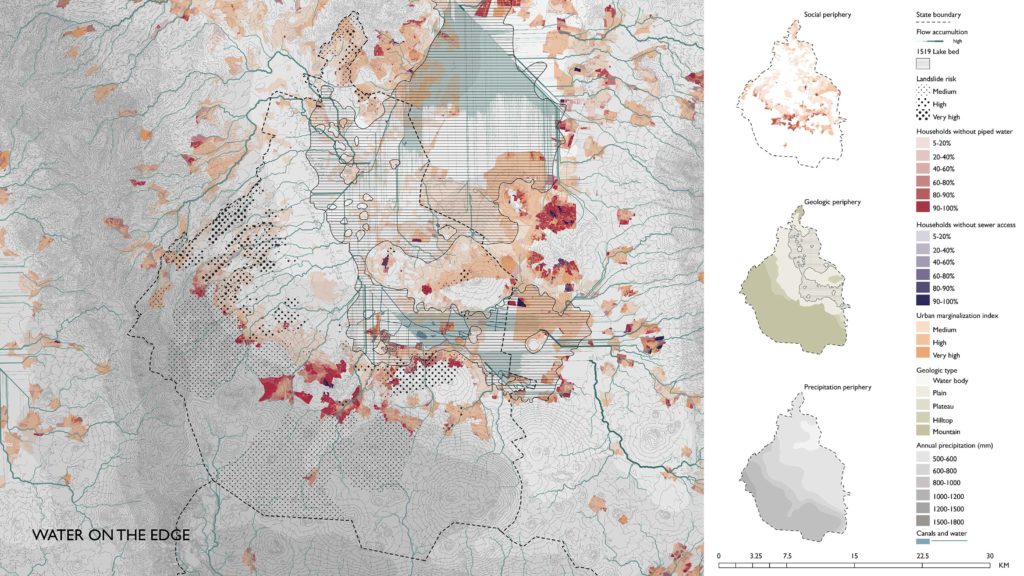
Water at the Edge: Towards Water Independence for Mexico City’s INFONAVIT Housing
Ciara Stein (MLA I/MUP ’21), Montserrat Bonvehi Rosich, Seth Denizen -
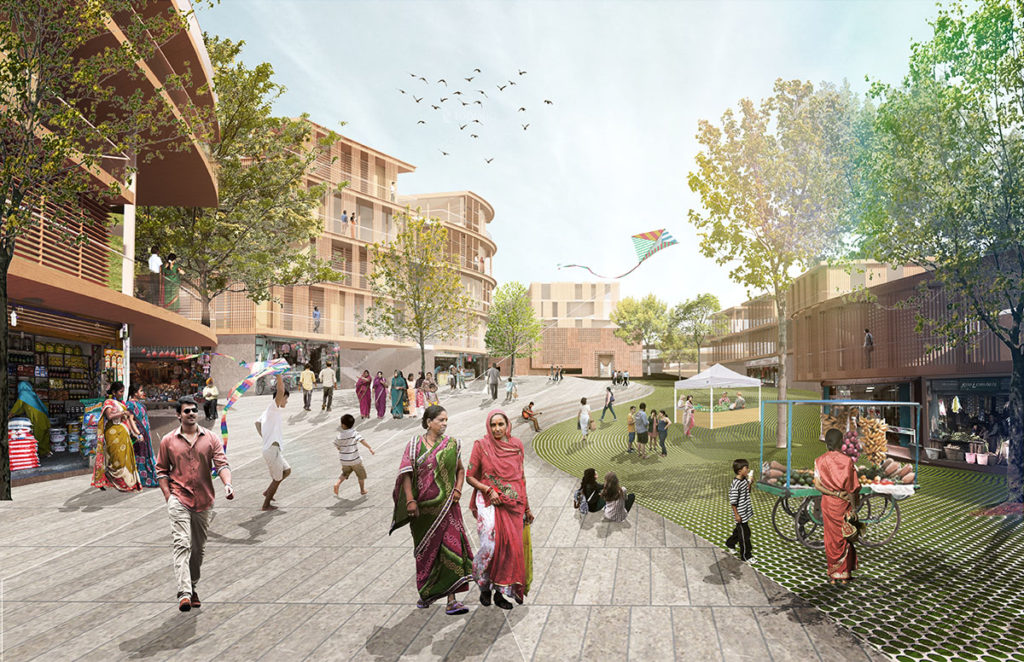
Dolvi Township Project
Andriani Wira Atmadja (MUP ’21), Nadege Giraudet (MArch I ’21), Richard Peiser
